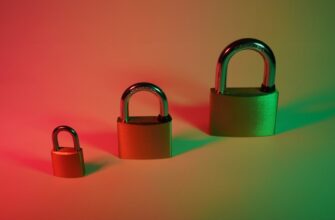🎮 Level Up with $RESOLV Airdrop!
💎 Grab your free $RESOLV tokens — no quests, just rewards!
🕹️ Register and claim within a month. It’s your bonus round!
🎯 No risk, just your shot at building crypto riches!
🎉 Early birds win the most — join the drop before it's game over!
🧩 Simple, fun, and potentially very profitable.
- 10 Essential Best Practices to Store Ledger from Hackers | Ultimate Security Guide
- Why Store Ledger Security Demands Immediate Attention
- 10 Technical Best Practices to Secure Your Store Ledger
- 1. Implement Multi-Factor Authentication (MFA)
- 2. Enforce Zero-Trust Architecture
- 3. Encrypt Data at Rest and in Transit
- 4. Conduct Regular Vulnerability Scans
- 5. Maintain Air-Gapped Backups
- Operational Protocols for Ledger Integrity
- 6. Enforce Strict Access Logging
- 7. Establish Change Management Controls
- 8. Mandate Cybersecurity Training
- Advanced Protective Measures
- 9. Deploy Blockchain Verification
- 10. Engage Third-Party Penetration Testing
- Frequently Asked Questions (FAQ)
- What’s the biggest vulnerability in store ledger systems?
- Can cloud-based ledgers be secured effectively?
- How often should ledger access permissions be reviewed?
- Are paper ledgers safer than digital ones?
- What immediate step should I take if my ledger is compromised?
10 Essential Best Practices to Store Ledger from Hackers | Ultimate Security Guide
Financial ledgers are the backbone of any business, containing sensitive transaction records, customer data, and proprietary information. As cyberattacks grow increasingly sophisticated, protecting your store ledger from hackers isn’t optional—it’s existential. This comprehensive guide reveals actionable best practices to fortify your financial records against breaches, ensuring compliance and preserving your business integrity.
Why Store Ledger Security Demands Immediate Attention
Hackers target financial ledgers to steal funds, manipulate transactions, or ransom critical data. A single breach can trigger:
- Catastrophic financial losses from fraudulent transfers
- Regulatory fines (e.g., GDPR, CCPA) exceeding millions
- Irreparable reputational damage and customer distrust
- Operational paralysis during forensic investigations
Proactive ledger protection mitigates these risks while demonstrating due diligence to auditors and stakeholders.
10 Technical Best Practices to Secure Your Store Ledger
1. Implement Multi-Factor Authentication (MFA)
Require MFA for all ledger access points. Combine:
- Biometric verification (fingerprint/facial recognition)
- Hardware security keys (YubiKey)
- Time-based one-time passwords (TOTP)
2. Enforce Zero-Trust Architecture
Assume all networks are compromised. Apply:
- Micro-segmentation to isolate ledger databases
- Least-privilege access controls (role-based permissions)
- Continuous identity verification for every session
3. Encrypt Data at Rest and in Transit
Use AES-256 encryption for:
- Ledger databases (enable TDE – Transparent Data Encryption)
- Backup files stored on-premises or in cloud
- All data transfers via TLS 1.3 protocols
4. Conduct Regular Vulnerability Scans
Schedule automated scans weekly using tools like:
- Nessus for system vulnerabilities
- OWASP ZAP for web application flaws
- Database-specific scanners (e.g., Oracle DB Assessor)
5. Maintain Air-Gapped Backups
Create offline, immutable backups:
- Store copies on disconnected external drives
- Use Write-Once-Read-Many (WORM) storage
- Test restoration quarterly
Operational Protocols for Ledger Integrity
6. Enforce Strict Access Logging
Track all ledger interactions with:
- Automated audit trails recording user/IP/timestamp
- Real-time alerts for anomalous activities (e.g., bulk exports)
- SIEM integration (Splunk, IBM QRadar)
7. Establish Change Management Controls
Require dual approvals for:
- Ledger schema modifications
- User permission changes
- Software updates affecting financial systems
8. Mandate Cybersecurity Training
Train staff quarterly on:
- Phishing identification (simulate attacks)
- Secure password hygiene
- Incident reporting procedures
Advanced Protective Measures
9. Deploy Blockchain Verification
For high-value ledgers, use:
- Private blockchain to hash transaction records
- Smart contracts for automated integrity checks
- Immutable audit logs via distributed ledger tech
10. Engage Third-Party Penetration Testing
Hire ethical hackers biannually to:
- Simulate APT (Advanced Persistent Threat) attacks
- Identify zero-day vulnerabilities
- Validate security configurations
Frequently Asked Questions (FAQ)
What’s the biggest vulnerability in store ledger systems?
Human error accounts for 88% of breaches (IBM). Unpatched software and weak access controls follow closely. Regular training and MFA are critical countermeasures.
Can cloud-based ledgers be secured effectively?
Yes, using Shared Responsibility Model compliance: encrypt data client-side, enforce strict IAM policies, and enable cloud provider security tools like AWS GuardDuty or Azure Sentinel.
How often should ledger access permissions be reviewed?
Quarterly audits are minimum. Automate reviews using tools like SailPoint to revoke unused privileges immediately following role changes or departures.
Are paper ledgers safer than digital ones?
No—physical ledgers risk theft, damage, and unauthorized access. Digitized records with proper encryption and access controls offer superior security when managed correctly.
What immediate step should I take if my ledger is compromised?
Isolate affected systems, preserve logs for forensics, notify legal/compliance teams, and activate incident response plan. Report to authorities per local regulations (e.g., FTC in US).
Implementing these layered defenses transforms your ledger from a hacker target into a fortress. Start with MFA and encryption today—your financial integrity depends on it.
🎮 Level Up with $RESOLV Airdrop!
💎 Grab your free $RESOLV tokens — no quests, just rewards!
🕹️ Register and claim within a month. It’s your bonus round!
🎯 No risk, just your shot at building crypto riches!
🎉 Early birds win the most — join the drop before it's game over!
🧩 Simple, fun, and potentially very profitable.








